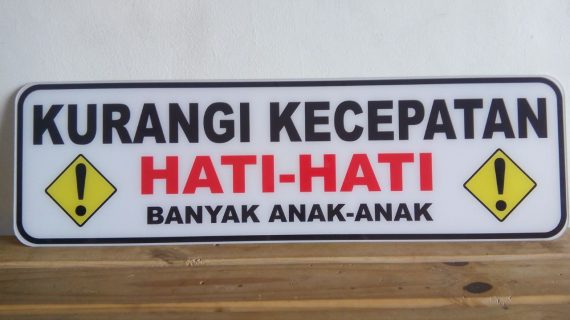In textbooks for the Indonesian language, you may read that the plural form is created by reduplicating the noun. In Indonesian for Beginners by Restiany Achmad, on page 6, it states:
-
The plural form of countable nouns in Indonesian is very simple: double the noun when it does not include a number or a quantity word.
However, this is not entirely accurate!
For example, how would you translate “When I was a child, there were no computers”?
Would it be…
-
Waktu saya anak, belum ada komputer-komputer?
Let’s correct it to sound more natural in Indonesian:
-
Waktu saya anak-anak, belum ada komputer.
Now, the sentence is correct. Notice that the singular (child) is reduplicated, but not the plural (computers)! So, if someone claims that forming the plural in Indonesian is simple, don’t believe them. It’s more complex than it appears. Reduplication in Indonesian is intricate and requires a good teacher or textbook to master it.
In Indonesian, every noun is inherently singular and plural, and context determines the intended meaning.
-
Mobil Jepang sangat digemari oleh orang Indonesia.
Japanese cars are very popular among Indonesians. -
Orang Indonesia tidak suka mobil Amerika.
Indonesians don’t like American cars.
These sentences imply general statements about Indonesian people and American cars, without indicating a specific number.
Instead of reduplication, group words can be used. For example, “more than one student” can be expressed as beberapa mahasiswa (some students), banyak mahasiswa (many students), or para mahasiswa (students as a group).
Reduplication is mainly used when the context does not make it clear whether a noun is singular or plural, or to express variety.
-
Saya suka kue-kue Indonesia.
I love all kinds of Indonesian cakes.
Reduplication is not used when group words are present. For instance, you wouldn’t say banyak mobil-mobil.

In Indonesia, you often see traffic signs saying, “Hati-hati. Banyak anak-anak!”
This is because anak and anak-anak have different connotations. Anak can mean ‘child’, ‘offspring’, or ‘person’. Although anak-anak can indicate plurality, it also refers to an underaged person.
-
Teman saya anak Jakarta asli.
My friend is a native of Jakarta.
Therefore, anak is not necessarily singular:
-
Mereka anak Papua.
They are Papuans.
It is now evident that anak-anak does not always indicate plural:
-
Waktu saya masih anak-anak, belum ada komputer.
When I was a child, there were no computers.
The same flexibility applies to bapak-bapak and ibu-ibu, which can be either singular or plural depending on the context. For example, bapak-bapak may refer to a mature male or males, while ibu-ibu can refer to a mature woman or women.
-
Dia seorang ibu-ibu, mungkin umurnya 30 tahun.
She is a mature woman, approximately 30 years old.
Here’s a quote from the novel Shanum by Tesa Yuli Dhenis (p. 32):
-
Dia sudah ibu-ibu beranak dua, tapi asik saja kalau berbincang dengannya.
She is a mature woman with two children, yet talking to her is captivating.
Noun Reduplication Indicating Plurality
The primary function of noun reduplication is to indicate plurality: Rumah means ‘a house’, while rumah-rumah means ‘houses’.
However, reduplication is used only when explicitly needed. For example, buku can mean both ‘book’ and ‘books’.
-
Taruh buku itu ke sana.
Put the book(s) over there.
If you want to emphasise the plural, you can reduplicate:
-
Taruh buku-buku itu ke sana.
Put the books over there.
But when the plural is apparent, reduplication is not necessary:
-
Saya membeli pisang.
I bought bananas.
Reduplication does not apply when referring to a general class:
-
Anjing suka tulang.
Dogs like bones. -
Monyet makan pisang.
Monkeys eat bananas.
Some words change meaning when reduplicated:
Mata means ‘eye’, while mata-mata means ‘spy’. Langit means ‘sky’, while langit-langit means ‘ceiling’.
And there are even words that only exist in reduplicated form such as baling-baling ‘propeller’, kupu-kupu ‘butterfly’, or cumi-cumi ‘squid’.
As you can see, reduplication of nouns is not a simple matter, but actually quite complex. Therefore, it is important that you learn Indonesian using a quality textbook.
Indonesian Online is a state-of-the-art e-learning interactive textbook for all proficiency levels, from beginner to advanced.
For more information on the Indonesian plural, consult J. N. Sneddon’s Indonesian Reference Grammar. Allen & Unwin 1996. The US edition was published by Routledge (2010) under the title Indonesian: A Comprehensive Grammar.
You may also want to read the article Expressing plural and singular forms in bahasa Indonesia.
Leave a Comment